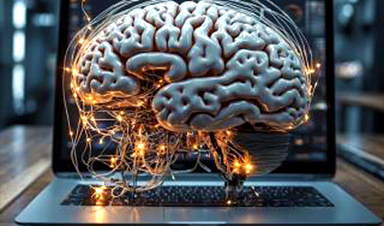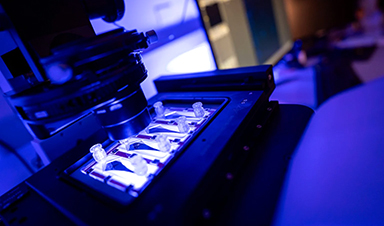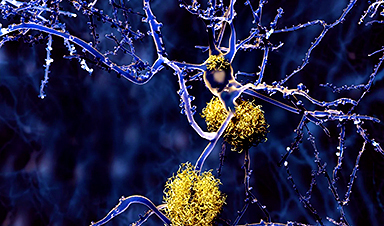News flash: The Digital Age is over.
As we transition from the era of digital domination, where technology led the march of progress, we are entering a fundamentally different epoch. This new era—the Cognitive Age—pivots on a central, transformative theme: The essence of being human—our thoughts, our consciousness, our very cognitive processes—are becoming the forefront of innovation and technological advancement.
This shift signals a move beyond the conventional ideas where technology and digitalization were the harbingers of change. In the digital era, we marveled at the prowess of binary code and silicon chips, which transformed our physical world in unprecedented ways. The narrative was primarily about machines and systems, about algorithms and automations. The value of these advances is still critical and fundamental to our path forward. However, as groundbreaking as these developments were, they set the stage for an even more revolutionary shift.
Enter the Cognitive Age, where the focus transcends technological tools and zeros in on the human mind itself, in partnership with the very technologies that were once the main act. This age is not defined merely by the tools we create but by how these tools intertwine with, extend, and enhance our cognitive capacities.
At the core of this transformation are technologies like generative pre-trained transformers and advanced large language models (LLMs). While these tools are technological marvels, what sets them apart is their ability to interact with, and augment human thought processes. Unlike the earlier eras of technological advancement, where human interaction with technology was largely unidirectional, we are now looking at a future where the interaction is reciprocal.
This shift brings with it a renewed emphasis on the uniquely human aspects of creativity, emotion, and ethical decision-making. As AI and LLMs grow more sophisticated, they don’t just process data; they start to understand context, emotion, and subtlety in a way that resembles human thought. This capability does not replace human cognition but complements it, leading to a co-evolution of human and machine intelligence.
In fact, this unique synergy is coming to life with the recent launch of the Humane AI Pin. This $699 device, comprising a square unit and a magnetic battery pack, simplifies interaction with technology. Controlled via voice, camera, gestures, and a small projector, it weighs just 54 grams in total. Notably, it doesn’t continuously record or listen passively, ensuring privacy and user control.
At the heart of the AI Pin is its connection to AI models, especially ChatGPT, facilitated by the Cosmos operating system. This system bypasses traditional app usage, routing user queries directly to relevant tools. The AI Pin’s functionality extends beyond mere gadgetry; it’s a wearable, AI-powered assistant capable of voice messaging, summarizing emails, analyzing food for nutritional information, and providing real-time translations. Future updates promise navigation and shopping features, with an open invitation for developers to further expand its capabilities.
This co-evolution has significant implications for innovation. The Cognitive Age pushes us to reimagine the nature of problem-solving, creativity, and ideation. It challenges us to rethink the dynamics of how we interact with technology, shifting from a mindset of creating tools to facilitate human tasks to fostering an environment where human and machine intelligence co-create, co-innovate, and collectively transcend the limitations of each.
Moreover, this shift underscores a fundamental truth: In the Cognitive Age, humanity isn’t just the beneficiary of innovation but an integral component of it. The technology doesn’t just serve us; it engages with us, learns from us, and in turn, we adapt and learn from it. This symbiosis is reshaping not just our tools and processes but our very conception of what it means to be human in a technologically advanced world.
It’s in this confluence of human and artificial cognition that the true transformative power of the Cognitive Age lies. It’s an era where our tools don’t just do more for us; they think with us, and in doing so, they elevate our capacity for thought, creativity, and innovation. As these cognitive technologies become more ingrained in our daily lives, they not only change the way we work and play but also the way we perceive the world and ourselves within it.
The Cognitive Age heralds a celebration of humanity, not through the lens of what technology can do for us but through the fascinating perspective of what we can achieve together with technology. This isn’t just a technological revolution; it’s a human one. As we stand on the threshold of this new age, we recognize that the most extraordinary aspect of this era is not the technology itself, but the unprecedented partnership between human and machine intelligence, a partnership that promises to redefine our future in ways we are only beginning to imagine.
News
Baffling Scientists for Centuries: New Study Unravels Mystery of Static Electricity
ISTA physicists demonstrate that contact electrification depends on the contact history of materials. For centuries, static electricity has intrigued and perplexed scientists. Now, researchers from the Waitukaitis group at the Institute of Science and [...]
Tumor “Stickiness” – Scientists Develop Potential New Way To Predict Cancer’s Spread
UC San Diego researchers have developed a device that predicts breast cancer aggressiveness by measuring tumor cell adhesion. Weakly adherent cells indicate a higher risk of metastasis, especially in early-stage DCIS. This innovation could [...]
Scientists Just Watched Atoms Move for the First Time Using AI
Scientists have developed a groundbreaking AI-driven technique that reveals the hidden movements of nanoparticles, essential in materials science, pharmaceuticals, and electronics. By integrating artificial intelligence with electron microscopy, researchers can now visualize atomic-level changes that were [...]
Scientists Sound Alarm: “Safe” Antibiotic Has Led to an Almost Untreatable Superbug
A recent study reveals that an antibiotic used for liver disease patients may increase their risk of contracting a dangerous superbug. An international team of researchers has discovered that rifaximin, a commonly prescribed antibiotic [...]
Scientists Discover Natural Compound That Stops Cancer Progression
A discovery led by OHSU was made possible by years of study conducted by University of Portland undergraduates. Scientists have discovered a natural compound that can halt a key process involved in the progression [...]
Scientists Just Discovered an RNA That Repairs DNA Damage – And It’s a Game-Changer
Our DNA is constantly under threat — from cell division errors to external factors like sunlight and smoking. Fortunately, cells have intricate repair mechanisms to counteract this damage. Scientists have uncovered a surprising role played by [...]
What Scientists Just Discovered About COVID-19’s Hidden Death Toll
COVID-19 didn’t just claim lives directly—it reshaped mortality patterns worldwide. A major international study found that life expectancy plummeted across most of the 24 analyzed countries, with additional deaths from cardiovascular disease, substance abuse, and mental [...]
Self-Propelled Nanoparticles Improve Immunotherapy for Non-Invasive Bladder Cancer
A study led by Pohang University of Science and Technology (POSTECH) and the Institute for Bioengineering of Catalonia (IBEC) in South Korea details the creation of urea-powered nanomotors that enhance immunotherapy for bladder cancer. The nanomotors [...]
Scientists Develop New System That Produces Drinking Water From Thin Air
UT Austin researchers have developed a biodegradable, biomass-based hydrogel that efficiently extracts drinkable water from the air, offering a scalable, sustainable solution for water access in off-grid communities, emergency relief, and agriculture. Discarded food [...]
AI Unveils Hidden Nanoparticles – A Breakthrough in Early Disease Detection
Deep Nanometry (DNM) is an innovative technique combining high-speed optical detection with AI-driven noise reduction, allowing researchers to find rare nanoparticles like extracellular vesicles (EVs). Since EVs play a role in disease detection, DNM [...]
Inhalable nanoparticles could help treat chronic lung disease
Nanoparticles designed to release antibiotics deep inside the lungs reduced inflammation and improved lung function in mice with symptoms of chronic obstructive pulmonary disease By Grace Wade Delivering medication to the lungs with inhalable nanoparticles [...]
New MRI Study Uncovers Hidden Lung Abnormalities in Children With Long COVID
Long COVID is more than just lingering symptoms—it may have a hidden biological basis that standard medical tests fail to detect. A groundbreaking study using advanced MRI technology has uncovered significant lung abnormalities in [...]
AI Struggles with Abstract Thought: Study Reveals GPT-4’s Limits
While GPT-4 performs well in structured reasoning tasks, a new study shows that its ability to adapt to variations is weak—suggesting AI still lacks true abstract understanding and flexibility in decision-making. Artificial Intelligence (AI), [...]
Turning Off Nerve Signals: Scientists Develop Promising New Pancreatic Cancer Treatment
Pancreatic cancer reprograms nerve cells to fuel its growth, but blocking these connections can shrink tumors and boost treatment effectiveness. Pancreatic cancer is closely linked to the nervous system, according to researchers from the [...]
New human antibody shows promise for Ebola virus treatment
New research led by scientists at La Jolla Institute for Immunology (LJI) reveals the workings of a human antibody called mAb 3A6, which may prove to be an important component for Ebola virus therapeutics. [...]
Early Alzheimer’s Detection Test – Years Before Symptoms Appear
A new biomarker test can detect early-stage tau protein clumping up to a decade before it appears on brain scans, improving early Alzheimer’s diagnosis. Unlike amyloid-beta, tau neurofibrillary tangles are directly linked to cognitive decline. Years [...]






















